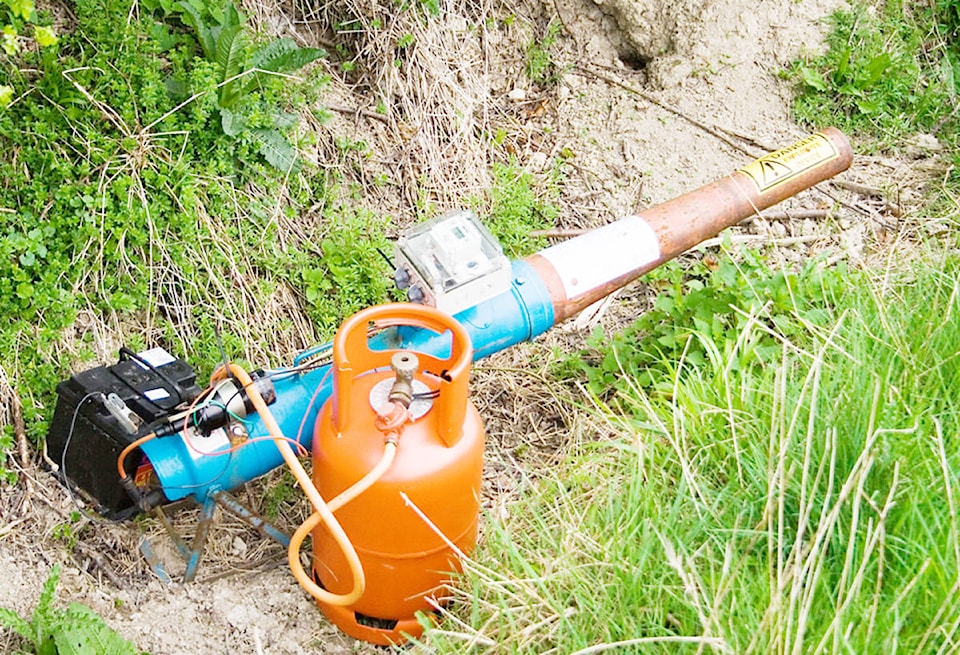Kitimat residents living downtown close to the river are correcting in thinking they’ve been hearing explosions late at night.
The sporadic bangs were made by air cannons installed by JGC/Fluor (JFJV) on the construction site for the LNG Canada plant as a measure to protect birds and deter them from nesting in an active construction zone.
The air cannons were programmed to operate daily from 6.30 a.m. to 10 a.m., and from 5 p.m. to 9 p.m.
“Recently, a technical issue caused some air cannons to go off at night, outside of the programmed time. This issue was resolved and we apologize for any inconvenience it caused,” said LNG Canada spokesperson Susannah Pierce.
“Deterring nesting in the project zone decreases the potential for birds abandoning nests with eggs or chicks before they’ve fledged.”
She said bird nesting season is currently underway and will continue until mid-August. Environmental monitors are conducting bird nest surveys daily until nesting season is completed.
“In the event an active bird nest is discovered, the appropriated buffer zone will be established,” added Pierce.
The bird canons are in the areas of the creek and diversion areas, as well as the future facility site, but there are no cannons in the Cedar Valley Lodge area.
Kitimat Valley Naturalists’ president Dennis Horwood said bird bangers are a common feature at a number of locations, including vineyards, toxic tailing ponds, airports, or any other facility that requires a clear airspace or where it is necessary to deter birds from landing.
“In the case of LNG Canada, I think it would be prudent to look at the issue from their perspective, whether we like what they are doing or not,” said Horwood. “If a robin, nighthawk, or junco builds a nest on an active industrial site, then LNG Canada is bound by law to respect the nest area and leave it undisturbed until the young fledge.”
He said it can take a month or more for the young to fledge, during which time work would be halted on site.
”In theory, a few bird nests could shut down large portions of the site for two or more months. If they can prevent the nests from being built in the first place, then I can understand why they would choose that option,” added Horwood.
He said other options for deterring birds from nesting could include lethal options like using shotguns.
“The bottom line for me – I completely understand the need (public safety or bird safety) to keep birds away from toxic waste ponds, airport runways, helicopter landing pads, and so on. Given a choice of a shotgun or a bird banger, I would choose the bird banger,” said Horwood.
He said a less invasive method would be to use trained raptors to be flown around the site.
“As far as I know, however, a peregrine or Harris’s hawk would not be able to do the job on their own. For example, peregrines will not hunt small passerines such as sparrows or warblers.”
